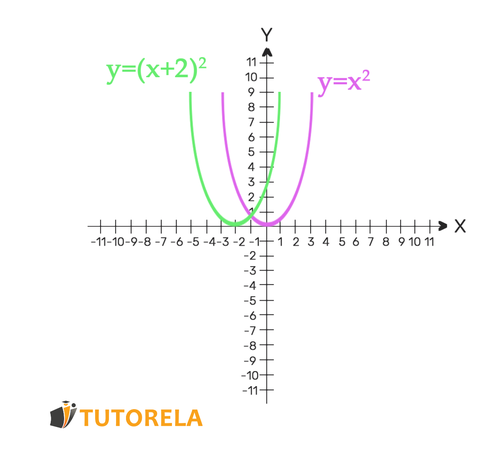Family of Parabolas
In this family, we have a slightly different quadratic function that shows us, very clearly, how the parabola shifts horizontally.
indicates the number of steps the parabola will move horizontally, to the right or to the left.
If is positive: (there is a minus sign in the equation) - The parabola will move steps to the right.
If is negative: (and, consequently, there will be a plus sign in the equation since minus by minus equals plus) - The parabola will move steps to the left.
Let's see an example:
The function
shifts two steps to the left.
Let's see it in an illustration:
